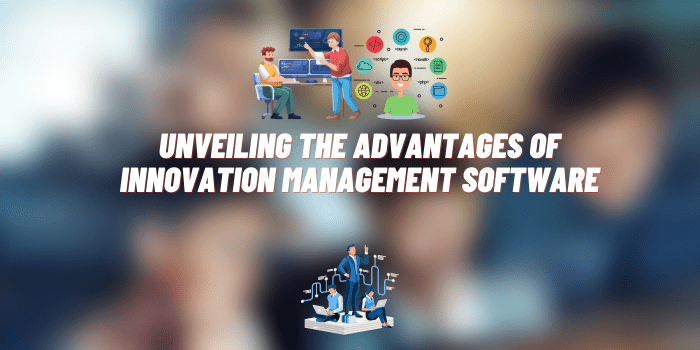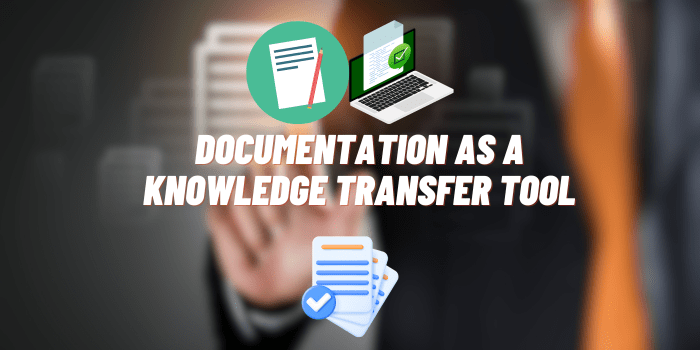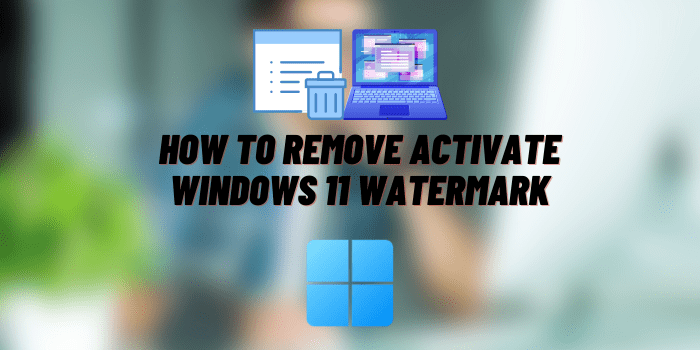Revolutionizing Approaches to Innovation: Unveiling the Advantages of Innovation Management Software
In today’s rapidly evolving business landscape, where competition is fierce, and markets are volatile, the ability to innovate has become a crucial factor for sustained success. Companies must constantly seek new ways to stay ahead of the curve, and innovation has emerged as the driving force behind this endeavor.
In this pursuit, the evolution of innovation management from traditional methodologies to cutting-edge software-driven approaches has been transformative. This article delves into the profound impact of innovation management software, exploring its role in fostering creativity, collaboration, efficiency, and data-driven decision-making while mitigating risks and ensuring adaptability to unique business needs.
- Evolution of Innovation Management
- Harnessing Technology for Innovation
- Innovation Management Software Defined
- Driving Creativity
- Collaboration and Communication
- Efficiency and Automation
- Data-Driven Decision Making
- Enhancing Visibility
- Risk Reduction
- Customization and Flexibility
- User Adoption and Engagement
- Measuring Success
Evolution of Innovation Management: From Traditional to Software-Driven Approaches

The journey of innovation management has evolved dramatically over the years. Traditional approaches often relied on manual processes, spreadsheets, and disjointed communication to idea management and initiatives. However, these methods lacked the efficiency, scalability, and real-time capabilities required to navigate today’s dynamic business environment.
Innovation management software emerged as a game-changer by centralizing the innovation process, enabling streamlined workflows, and enhancing cross-functional collaboration. This shift has empowered organizations to harness technology for innovation, effectively transforming their innovation ecosystems.
Harnessing Technology for Innovation: Role and Impact of Management Software
Innovation management software catalyzes driving innovation by offering comprehensive innovation management tools and functionalities tailored to an organization’s unique needs. This software facilitates idea generation, evaluation, and implementation, providing a structured framework that fosters creativity.
Furthermore, it facilitates the seamless flow of ideas across departments, promoting cross-pollination of thoughts and diverse perspectives. This shift from siloed innovation efforts to a collaborative ecosystem significantly accelerates the pace of innovation.
Innovation Management Software Defined: Features, Functions, and Benefits
Innovation management software encompasses many features designed to optimize the innovation lifecycle. From idea generation and capture to evaluation, selection, and execution, these innovation management platform provide a centralized hub for managing the entire process.
Automated workflows, customizable stages, and intuitive user interfaces streamline the journey from concept to reality. The benefits are manifold, including reduced administrative overhead, improved transparency, and a more organized approach to innovation. Additionally, these innovation management solution facilitate real-time tracking and reporting, empowering stakeholders with insights into ongoing initiatives.
Driving Creativity: How Innovation Management Software Sparks New Ideas

Creativity lies at the heart of innovation, and innovation management software is a powerful idea management tools for nurturing creative thinking. By providing a digital space where employees can share their ideas, collaborate on concepts, and receive feedback, these platforms break down barriers to participation.
Moreover, they often incorporate features such as brainstorming sessions, idea management software, and gamification elements, fostering a culture of continuous idea generation. This approach empowers organizations to tap into the collective creativity of their workforce, leading to breakthrough innovations that might otherwise remain untapped.
Collaboration and Communication: Enabling Teamwork through Software Solutions
Innovation is rarely the result of individual effort—it thrives in collaborative environments. Innovation management software bridges geographical and departmental divides, facilitating communication and cooperation among diverse teams.
Real-time collaboration tools, discussion boards, and project-sharing capabilities allow for seamless interaction, enabling employees to build upon each other’s ideas. This enhanced collaboration accelerates the innovation process, promotes knowledge sharing, and fosters a sense of collective ownership over projects.
Efficiency and Automation: Streamlining Processes with Innovation Software
The manual processes of traditional idea management solution often suffer from inefficiencies, bottlenecks, and a lack of scalability. Innovation management software addresses these issues by automating routine tasks, standardizing processes, and ensuring a consistent approach to innovation across the organization. This automation frees up valuable time and reduces the risk of human errors, ensuring that innovative ideas are nurtured and executed promptly.
Data-Driven Decision Making: Leveraging Insights for Smarter Innovations
Innovation management software generates a wealth of data throughout the innovation lifecycle. From idea submission rates to evaluation outcomes and project timelines, these platforms provide valuable insights that guide decision-making. By analyzing this data, organizations can identify trends, assess the effectiveness of innovation strategies, and allocate resources strategically. Data-driven insights enable informed choices, reducing the likelihood of investing in ideas with limited potential and maximizing the impact of innovation efforts.
Enhancing Visibility: Tracking and Monitoring Innovation Initiatives
A key challenge in innovation management is maintaining visibility into the progress of various initiatives. Innovation management software addresses this by offering real-time tracking and monitoring capabilities. Stakeholders can access up-to-date information on the status of projects, milestones achieved, and potential roadblocks. This transparency ensures accountability, enables timely interventions, and fosters a sense of ownership among team members, ultimately leading to more efficient and successful innovation outcomes.
Risk Reduction: Managing Challenges and Uncertainties with Software

Innovation inherently involves risk, as uncharted territory may lead to unforeseen challenges. Innovation management software helps organizations manage these risks by providing a structured risk assessment, mitigation, and contingency planning framework. Companies can navigate uncertainties more effectively by systematically evaluating potential risks and creating mitigation strategies. Furthermore, the ability to collaborate and share insights within the software platform enhances the organization’s collective intelligence, contributing to more well-informed risk management decisions.
Customization and Flexibility: Adapting Software to Unique Innovation Needs
Every organization’s innovation journey is distinct; innovation management software recognizes this diversity. These platforms often offer a high degree of customization, allowing businesses to tailor the software to their specific innovation processes, terminology, and objectives. Whether a company follows a stage-gate model, lean innovation methodology, or any other approach, the software can be configured to align seamlessly with these strategies. This adaptability ensures that the software complements the organization’s existing practices rather than dictating rigid workflows.
User Adoption and Engagement: Encouraging Participation through Software
The success of innovation management software hinges on user adoption and engagement. These idea management platform are designed to drive participation with user-friendly interfaces, intuitive navigation, and interactive features that encourage active involvement. Gamification elements, recognition mechanisms, and transparent idea evaluation processes create a sense of ownership and excitement among employees. When employees feel valued and see their contributions making an impact, they become more invested in the innovation process, resulting in a culture of continuous improvement.
Measuring Success: KPIs and Metrics in Innovation Management Software
Measuring the success of innovation efforts is essential for refining strategies and optimizing outcomes. Innovation management software provides a robust framework for tracking Key Performance Indicators (KPIs) and metrics. These measurements include the number of submitted ideas, the success rate of implemented projects, time-to-market for new products, and return on investment for innovation initiatives. By innovation management system analyzing these metrics, organizations can gauge the effectiveness of their innovation strategies, make informed adjustments, and ensure that innovation remains a core driver of business growth.






